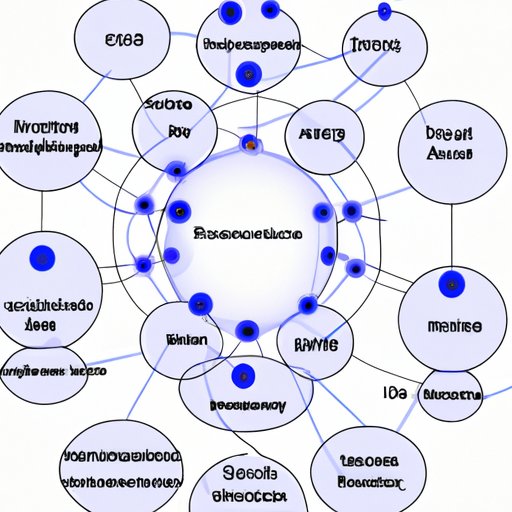Introduction
System architecture is a term used to describe the design of a system. It is the fundamental structure of a system, which includes its components and how they interact with each other. It is the way in which elements of a system are organized and connected to form a coherent whole. In this article, we will explore what system architecture is, different types of system architectures, and key considerations for system architecture.

Exploring System Architecture: An Overview for Beginners
System architecture can be defined as the overall design of a system, which includes both hardware and software components. It is the blueprint that defines how the system should be built and how the components should interact with each other. System architecture also determines how the system functions and how it responds to external inputs and outputs.
There are several different types of system architectures, including distributed systems, client-server architectures, and service-oriented architectures. Each type has its own unique characteristics and benefits. For example, distributed systems allow for better scalability and increased reliability, while client-server architectures provide more control over security and performance.
When designing a system architecture, there are several key considerations to take into account. These include scalability, security, performance, cost, and availability. It is important to understand how each of these factors will affect the system before deciding on a particular architecture.

A Guide to Understanding System Architecture
In order to understand system architecture, it is important to first understand its components. The main components of system architecture are hardware, software, data, and networks. Hardware refers to the physical components of a system, such as processors, memory, and storage devices. Software is the set of instructions that control the behavior of the system. Data is the information stored within the system. Networks are the pathways through which data is exchanged between components.
The benefits of system architecture are numerous. A well-designed system architecture can improve security, increase efficiency, provide better scalability, and reduce costs. System architecture can also help to ensure that the system is reliable and available when needed.
Despite the many benefits, there are also some challenges associated with system architecture. One of the biggest challenges is complexity. Systems can become increasingly complex as more components are added, which can make them difficult to manage and maintain. Another challenge is interoperability. Different components may need to be able to communicate and work together, but this is not always easy to achieve.
What is System Architecture and How Does it Work?
Now that we have explored the components of system architecture, let’s take a closer look at how it works. There are several different types of system architecture, each with its own unique characteristics. Some of the most common types are distributed systems, client-server architectures, and service-oriented architectures.
Distributed systems are composed of multiple components that are spread out across multiple computers or locations. This type of architecture is often used for large-scale applications, such as web services or cloud computing. Client-server architectures involve a central server that handles requests from clients. This type of architecture is often used for web applications and database systems.
Service-oriented architectures are based on the idea of services that can be accessed by clients. This type of architecture is commonly used for enterprise applications, such as customer relationship management (CRM) systems. No matter which type of system architecture you choose, all of them involve the same basic components: hardware, software, data, and networks.
Components of System Architecture
As mentioned above, the components of system architecture are hardware, software, data, and networks. Hardware refers to the physical components of a system, such as processors, memory, and storage devices. Software is the set of instructions that control the behavior of the system. Data is the information stored within the system. Networks are the pathways through which data is exchanged between components.
Hardware is the foundation of any system architecture. Without the right hardware, the system will not be able to function properly. It is important to choose hardware that is powerful enough to meet the demands of the system. Additionally, hardware must be compatible with the other components, such as the software and data.
Software is the code that makes the system run. It is responsible for controlling how the system behaves and responding to user input. Software can be written in many different languages, such as Java, Python, or C++. Data is the information that is stored within the system. This can include user data, application data, or system data.
Networks are the pathways through which data is exchanged between components. These pathways can be either physical or virtual. Physical networks use cables, routers, and switches to connect components, while virtual networks use the internet to connect components.
The Benefits of System Architecture
System architecture can bring many benefits to a system. Improved security is one of the most important benefits. A well-designed system architecture can help to protect the system from malicious attacks and unauthorized access. Increased efficiency is another benefit. A good system architecture can help to reduce wasted time and resources by optimizing processes and improving communication.
Better scalability is another benefit of system architecture. Scalability refers to the ability of a system to grow and adapt to changing demands. A well-designed system architecture can help to ensure that the system can easily scale up or down as needed. Finally, system architecture can help to reduce costs by making the system more efficient and reducing the need for additional hardware or software.
Conclusion
System architecture is an important concept in the world of technology. It is the fundamental structure of a system, which includes its components and how they interact with each other. System architecture can bring many benefits, such as improved security, increased efficiency, better scalability, and reduced costs. Understanding system architecture and its components is essential for designing effective systems.
(Note: Is this article not meeting your expectations? Do you have knowledge or insights to share? Unlock new opportunities and expand your reach by joining our authors team. Click Registration to join us and share your expertise with our readers.)
